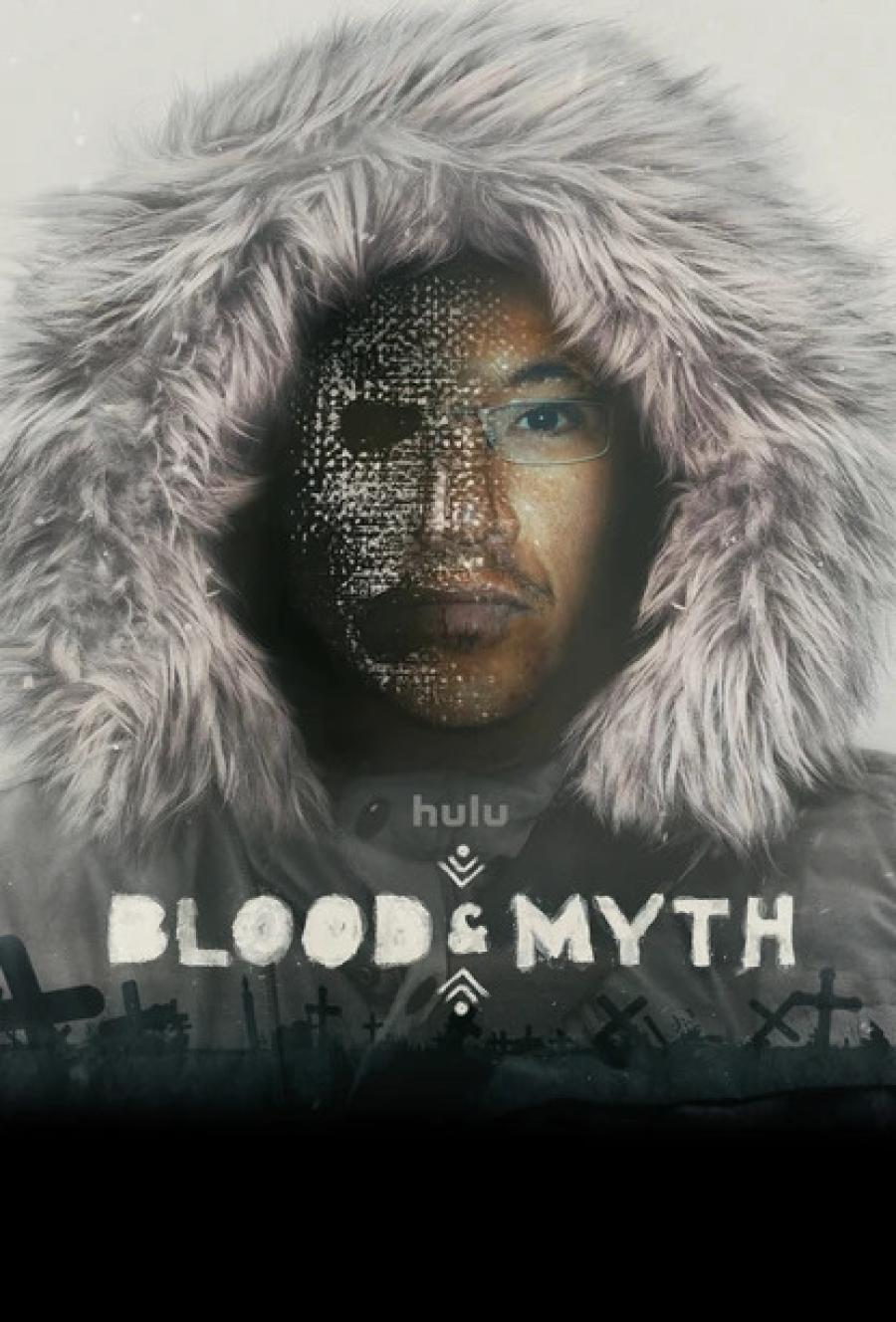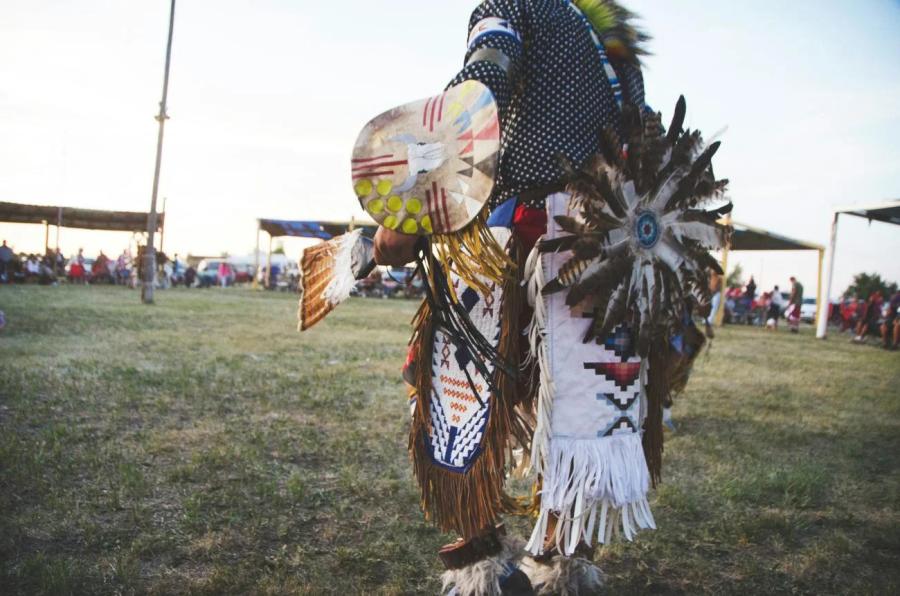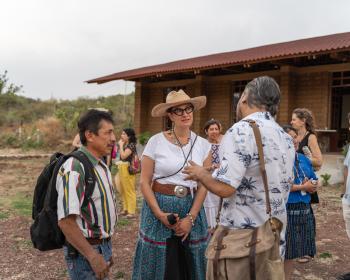During the 1960s, tribal governments qualified for federal funding and for the first time, they gained considerable access to funds and personnel that were usually limited and tightly controlled under Bureau of Indian Affairs (Big,) administration. Many tribal governments rapidly expanded with the new programs and resources, and tribal political relations intensified in the approximately 500 federally recognized American Indian tribes. Before the 1960s, most tribal governments had established constitutions under the Indian Reorganization Act of 1934, but most tribes, like the Navajo, were given rules and regulations dictated by BIA officials. Before the 1960s, most tribal governments had few autonomous funds and were dominated by BIA administration. In many tribal communities, few people voted for tribal officers and relatively little attention was given to the election of a tribal government.
During the mid-1960s, the Zuni Pueblo moved to exclude BIA managed programs from their community by using a little known law which allowed the Zuni tribal government to contract local BIA services and manage the programs. The Zuni highly valued their political and cultural autonomy and did not want BIA interference in their community The Zuni plan of contracting BIA services worked so well that it caught the attention of President Richard Nixon. Nixon drew upon the Zuni experience in a speech in 1969, and remarked that other American Indian tribes could follow the Zuni model and achieve greater "self-determination."
The period after the late 1960s came to be known as the "Self-determination Era," where U.S. policy toward American Indian tribes provided greater opportunities for Indian people to manage local government and local issues. The Self-determination and Education Act of 1975 (PL-93-638) was passed which allowed tribal governments to contract BIA programs such as police, maintenance, education, social services, timber management, health clinics, etc. The new contracts were widely used by reservation communities to gain more control in local schools that were once administered by the BIA. Local communities gained more administrative, curriculum, and advisory control over the schools that taught their children. Despite having greater control over reservation life, the contracting process was complicated and, to a large extent, dictated by BIA rules and regulations.
Alcatraz: Catalyst for Activism
The late 1960s and early '70s saw an increase of Indian activism and the rise of the "Red Power" as an activist movement. The occupation of Alcatraz Island, starting in November 1969 and lasting until June 11, 1971, started a series of at least 75 property seizures over the next eight years. The occupation at Alcatraz Island was started primarily by college students, gained considerable publicity, served to create awareness of Indian issues among the general public, and raised consciousness of many Native American people. While at Alcatraz-Island, many American Indians learned about treaty rights, ways of organizing and tactics for taking over other U.S. installations in efforts to draw attention to American Indian demands for greater educational and economic opportunities and tribal rights.
Many American Indians who took part in the Alcatraz Island occupation later became activists in communities across the nation. They advocated for American Indian rights, and in many cases, seized property to get attention from officials and the U.S. public. A surplus military base near Davis, California, was occupied in 1970; after negotiations the property was granted for use as an American Indian college. Deganawida-Quetzalcoal University (DQU) opened in 1971. Many Alcatraz activists later joined the American Indian Movement (AIM), which had originally started as a community action group to protect the rights and promote education and welfare among the Minneapolis urban American Indian community. AIM members participated in a variety of takeovers and protests during the 1970s.
In 1972, American Indian activists formed the "Trail of Broken Treaties," which started in San Francisco, Seattle, and Alcatraz Island and met and rallied in Minneapolis before moving to Washington DC. Activists took over the BIA central headquarters building and demanded the restoration of treaty relations and that termination policies end. Termination policies were passed by Congress in the 1950s to dismantle reservations and assimilate American Indians into US society. Activists also demanded that Public Law 280 be withdrawn. This law gave six states the right to hear criminal and civil cases occurring on reservations. The occupation gained considerable publicity although the government ultimately rejected AIM's demands. Soon to follow was the occupation of Wounded Knee, South Dakota, the site of the 1890 Massacre of Lakota Ghost Dancers. For 70 days, AIM and other American Indian activists held off federal marshals and FBI agents, thereby gaining considerable international publicity about Native American rights and issues.
American Indian Education
Navajo Community Colleges (NCC) received a major federal grant to start construction in the early 1970s. This started a movement among many reservations to establish local, tribally controlled community colleges. American Indian students did not, and still do not graduate from college in high rates or numbers. Many have difficulty adjusting to college institutions outside their reservation and communities. Tribal community colleges allowed a student to remain on their home reservation and attend class. Local language and cultural information are taught, in addition to basic college requirements for the first two years. Many tribal colleges were started in the 1970s and some in the 1980s. On October 17, 1978, Congress passed the Tribally Controlled Community staff 100 years ago. Colleges Act which provided grants to tribally controlled colleges. By the late 1990s, 29 American Indian colleges were operating mainly in the United States, with a few in Canada. Community colleges teach tribal culture and history, and promote community development, while preparing some students for transfer to four year institutions. American Indian students stayed longer and graduated more often in the tribally controlled community colleges than in non-Indian controlled institutions of higher learning. In many ways, the tribally controlled community colleges represented the most significant new institutions in Indian country.
Advancements in Religious Freedom
The 1970s and 1980s saw important court decisions in tribal religious freedom. Some court cases prevented tribal religious practitioners from enjoying pristine environments to practice their religion free from interference from roads, ski slopes, and other forms of economic development. In the case, Lyng v. Northwest Indian Cemetery Protective Association, the Supreme Court held that the First Amendment of religious freedom did not prevent the National Park Service from constructing a service road through mountainous areas where members of the Yurok, Karok, and Tolowa tribes prayed. The mountains were places of prayer and ceremony and may locations were considered sacred. They argued that the road disrupted their prayer and the pristine nature of the area and asked that the road not be constructed. The Supreme Court ruled that American Indian freedom of religion could not outweigh the interests of the government in constructing the road.
In a disturbing Supreme Court case to religious freedom, Employment Division of Oregon v. Smith, two American Indians in Oregon were denied unemployment benefits because they were practicing members of the Native American church. Members of the Native American church take a sacrament, peyote, containing mescaline, a restricted substance. The ruling ignited considerable concern about protecting religious freedom from state interests. In 1993, a coalition of religious groups and churches prevailed in Congress and passed the Religious Restoration Act, requiring courts to balance compelling state interest and religious freedoms when ruling on state and religious freedom issues. The act restored a judicial principle that was sidestepped in the Smith case. However, because the Religious Restoration Act does not explicitly mention the use of peyote, the Native American church campaigned to protect peyote users. This effort, quietly supported by some conservative church groups, was successful in Congress with passage of the American Indian Religious Freedom Act Amendments of 1994.
American Indian Organizing
American Indian demography has changed since 1972; in 1990, over two-thirds of the American Indian population lived in urban areas. During the 1970s, there were many urban American Indian centers established as cultural, community, and social service centers. Many were forced to close in the 1980s due to the considerable downsizing of federal programs. During the same period, tribal governments lost funding ground in real dollars. Conservative republican presidents favored greater self-determination for tribes but preferred that the tribes increasingly pay for their own local government. Still, the present era of fiscal conservatism does not promise that American Indian tribes will get significant federal funding needed to create stronger tribal governments and communities.
American Indian Prominence in the Arts
Great leaps forward have been made in recent years in the areas of American Indian arts, literature, film, and theater. Increasingly, there is a larger and more informed press and media. One American Indian newspaper, Indian Country Today, is distributed nationally. Many American Indian owned and produced magazines, newspapers, and newsletters circulate information about American Indian issues. American Indians are featured more in movies and television. American Indian directors, writers, and producers have produced many documentaries, feature films, and other productions about American Indians. To this date, American Indian producers, writers and directors are working to create wholly Indian productions with Indian themes and life situations. However, without access to considerable funding, American Indian media leaders have not gained control over a television or feature film production that would allow them to display tribal themes and stories.
The last several decades were filled with new American Indian poetry and fiction. Many American Indian writers, such as Sherman Alexie and Louise Erdrich, give powerful expression to the reservation experience and explore it in deep and often humorous ways. More writers are appearing every year, and the American Indian art of storytelling seems well preserved in the new literary genre. At the end of the twentieth century, American Indian communities are struggling to preserve community, language, and tribal sovereignty.
Gaming
American Indian management of casinos gained wide publicity during the late 1980s and 1990s. In 1988, the Cabazon tribe of southern California won a Supreme Court decision that enabled American Indian tribes to operate gaming casinos on their land. Because of the inherent sovereignty of American Indian nations, and the special law PL 280 governing California's state and Indian, civil and criminal jurisdiction in Indian country, American Indians had the right to carry on gaming in California if the state permitted similar forms of gaming. This law allowed the Cabazon tribe to manage a Casino for profit and avoid regulation or shut down by the state of California. Soon thereafter in October of 1988, the U.S. Congress passed the Indian Gaming and Regulatory Act allowing Indian gaming, but placed it under regulation and required Indian tribes to negotiate agreements with their surrounding state about the forms and profits gained from gaming. Under the act, states can monitor and determine the types of gaming that can be legally adopted by the tribes in their states. This act infringed on the sovereignty of the tribal nations, but according to U.S. law, Congress can specify limitations of American Indian tribal sovereignty.
Gaming has generated large amounts of income for some American Indian communities. Most reservation gaming facilities are far from urban areas, bring in funds, and employ American Indian and non-Indian people, but only moderate sums of money are gained. Nevertheless, many tribes located closer to larger urban centers have accumulated considerable capital.
Many tribes do not believe that gaming will continue to be profitable into the future. Consequently, they are investing gaming income in other types of economic enterprise in hopes of creating a diversified and enduring tribal economy. Furthermore, many tribes involved in gaming funnel their income back into social programs, cultural preservation projects, community events, support for elders, and other activities that strengthen tribal communities.
Over the past two and a half decades, many events such as land claims, fishing rights, subsistence rights, repatriation of sacred and human remains, water rights, and others have been central concerns for native peoples. Issues of tribal sovereignty remain paramount. Still outstanding are many issues of reclamation and protection of sacred sites, such as the Black Hills of South Dakota, a wintering place and sacred site for the Lakota. Tribes have been able to protect orphaned American Indian children with the Indian Child Welfare Act which requires state courts to send American Indian children to the jurisdiction where the child is enrolled as a tribal member. The activist movements of the 1970s are gone, but many of their goals and values are carried on through the revival of American Indian identity and the cultural restoration of their communities. Spiritual leaders and American Indians who uphold some or many aspects of traditional tribal life are more accepted and respected now than during the 1950s. American Indian Studies centers, community colleges, language renewal programs, changes in team mascot names, and repatriation of human remains and sacred objects are among the successes in which Indian activists played a role. Activists raised consciousness among non-Indians about native cultures and issues, while at the same time restoring commitment among many persons of American Indian descent to their own tribal communities and cultures.
Suggested Readings
Baringer, Sandra. forthcoming. "Indian Activism and the American Indian Movement: A Bibliographic Essay" American Indian Culture and Research Journal. 21:4.
Champagne, Duane. 1994. The Native North American Almanac. Detroit: Gale Research Inc.
Johnson, Troy R. 1996. The Occupation of Alcatraz Island: Indian Self-Determination and the Rise of Indian Activism. Urbana: The University of Illinois Press.
Nagle, Joane. 1996. American Indian Ethnic Renewal: Red Power and the Resurgence of Culture. New York: Oxford University Press.
Smith, Paul Chaat and Robert Mien Warrior 1996. Like a Hurricane: The Indian Movement from Alcatraz to Wounded Knee. New York: The New Press.
Article copyright Cultural Survival, Inc.



